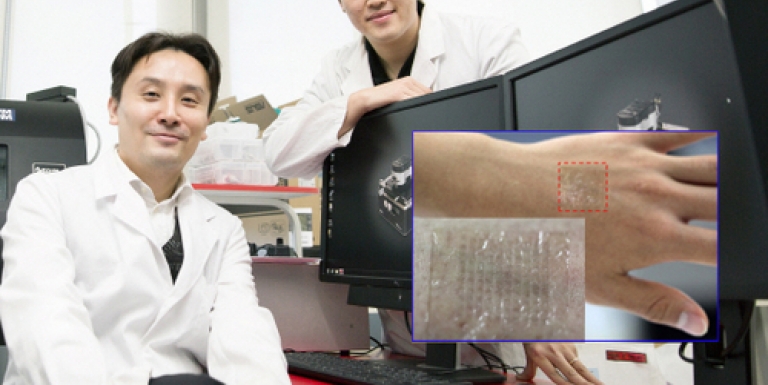
- Inspiring People -
- 2mins -
- 74 views
These temporary graphene ‘tattoos’ could help track your vital signs
A graphene-based ‘tattoo’ that functions as a wearable electronic device to monitor health has been developed by researchers in Texas.
Electronic tattoo will measure electrical activity of the heart, brain, and muscles
Researchers at the University of Texas have designed a graphene-based ‘tattoo’ that can be laminated directly to the skin with water, similar to a temporary tattoo. However, instead of featuring colourfully artistic designs, this new tattoo is almost invisible. Its main appeal is that graphene’s unique electronic properties enable the tattoo to function as a wearable electronic device, with potential applications including biometric uses – such as measuring the electrical activity of the heart, brain, and muscles – as well as human-machine interactions.
The ultra-thin graphene tattoos can fully conform to the flexing of the skin
Developed by a team of researchers, led by Deji Akinwande and Nanshu Lu, at the University of Texas at Austin, these latest graphene electronic tattoos are similar in some ways to commercially available electronic devices for real-time monitoring of health and fitness: both kinds of device are capable of heart rate monitoring and bioimpedence (a measure of the body’s response to an electric current).
However, as the ultra-thin graphene tattoos can fully conform to the flexing of the skin, they offer medical-grade data quality, in contrast with the poorer performance of the rigid electrode sensors mounted on bands and strapped to the wrist or chest.
Due to this high-quality sensing, the researchers expect that the graphene tattoos may offer promising replacements for existing medical sensors, which are typically taped to the skin and require gel or paste to enable the electrodes to function.
"The graphene tattoo is a dry physiological sensor which, because of its thinness, forms an ultra-conformal contact to skin, resulting in increased signal fidelity," Shideh Kabiri Ameri at the University of Texas at Austin told Phys.org."Conformability results in less susceptibility to motion artifacts, which is one the biggest drawbacks of conventional dry sensors and electrodes for physiological measurements."
Tests showed that the graphene electronic tattoos can be successfully used to measure a variety of electrophysiological signals, including skin temperature and skin hydration, and can function as an electrocardiogram (ECG), electromyogram (EMG), and electroencephalogram (EEG) for measuring the electrical activity of the heart, muscles, and brain, respectively.

The potential applications of the graphene tattoos are diverse and exciting
"Graphene electronic tattoos are most promising for potential applications in mobile health care, assisted technologies, and human machine interfaces," Kabiri Ameri explained to Phys.org.
"In the area of human machine interfaces, electrophysiological signals recorded from the brain and muscles can be classified and assigned for specific action in a machine." he continued.
"This area of research can have applications for the internet of things, smart houses and cities, human computer interaction, smart wheelchairs, speech assistance technology, monitoring of distracted driving, and human-robot control. Recently we have demonstrated the application of graphene tattoos for sensing human signals to wirelessly control flying objects. That demonstration will be reported in the near future."
Source: Phys.org

